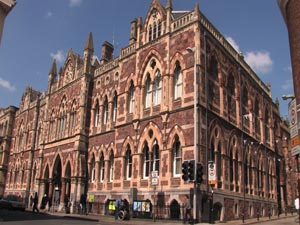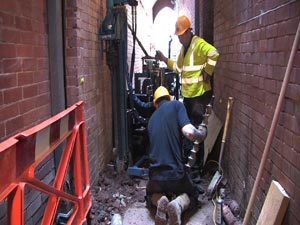

- Three story brick building
- Built in 1700's
- The building was renovated in 2006
- Exhibition space ca. 4000 m2

Royal Albert Museo

PowerPile installation may also be performed in tight spaces
Powerpiles were used in conjunction with the power Injection process in the summer of 2007 to halt a century of settlement of the two main buildings at Exeter’s Royal Albert Memorial Museum, which have been gradually leaning into a backfilled Norman ditch running under part of the structure. Differential settlement had created cracking, distortion and rotation of the masonry wall panels.
Rather than use traditional underpinning which would have created new localised stiff points in the ground and required large-scale excavation in an archaeological site, engineers considered polymer injection to be a more sensitive solution.
Over 3 weeks, PowerPile applied their power Injection process to 95 linear metres of wall. In power Injection, expanding geopolymer resins are injected through small diameter holes immediately beneath the foundation and then at greater depths in order to fill voids and consolidate the ground. Only 10% of the weight of concrete, the resins do not add significant stress to the surrounding ground, yet provide compressive strength under load up to 6000 kPa. For additional strengthening PowerPile also applied the new expanding polymer pillar system to another 56 linear metres.
The clients were very satisfied with the result. Ground strengthening was completed with minimum intrusion to the fabric of the building, and settlement was stopped. For the first time in 110 years, the building is stable.
PowerPile geopolymer pillar is an internationally patented technology for ground improvement and structural support.